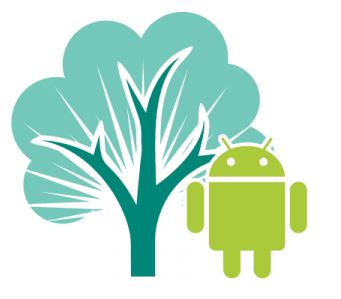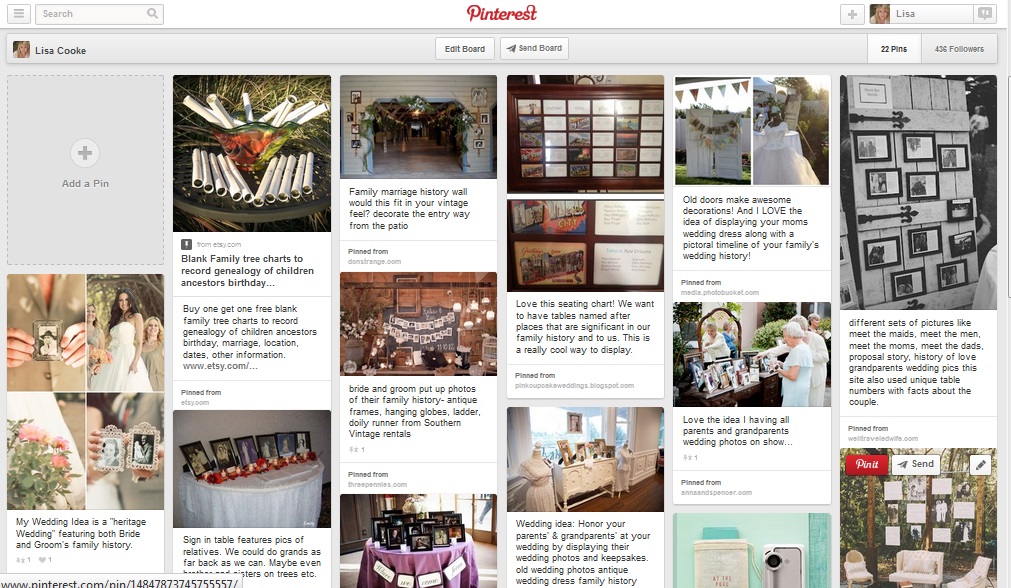by Diahan Southard | Feb 25, 2014 | Certification, Family History Podcast, Research Skills, Source Citation
Originally published 2009. Republished February 25, 2014
[display_podcast]
Download the Show Notes for this Episode
Welcome to this step-by-step series for beginning genealogists—and more experienced ones who want to brush up or learn something new. I first ran this series in 2008-2009. So many people have asked about it, I’m bringing it back in weekly segments.

Episode 20: The Genealogical Proof Standard
In this episode we are going to cover a powerful process for doing your genealogy research. It’s called the Genealogical Proof Standard or GPS.
If you’re new to research you may hear some terms that you’re not familiar with. This is the ideal time to start getting familiar with them because it may save you going back and re-doing some of your hard work later down the road.
If you’re an experienced researcher, you may already have had some experience with the GPS. But even if you have, you likely haven’t heard it quite like this. My very special guest is Mark Tucker, a software architect by day and an avid genealogist evenings and weekend. And it’s safe to say Mark has a passion for genealogy and he brings his computing expertise to genealogy in some pretty exciting ways, most recently by process mapping the Genealogical Proof Standard – the GPS – into a visual aid that will help you navigate your way to a successful family tree. (Update: Mark’s Think Genealogy blog is no longer available.)
In our first segment Mark tells us how he got started using the Genealogical Proof Standard, why he created the GPS map, and what it will do for you to improve your genealogy research. Then he gives us an overview of the Genealogical Proof Standard and the various tools that go along with it.
In our second segment we talk about how the GPS map can be effectively used for breaking down your research brick walls.
What is the GPS?
The Genealogical Proof Standard speaks to the quality of our genealogy research process, as outlined in the BCG Genealogical Standards Manual. BCG stands for the Board of Certification of Genealogists, and it’s an internationally recognized organization that certifies qualified genealogists who meet their standards.
The idea behind the GPS is that it provides standards generally accepted in the field of genealogy research. Historically the GPS has been thought of in conjunction with professional genealogists. But more and more it is being used by family historians everywhere who want to do a quality job of climbing their family tree.
The Genealogical Proof Standard is really like a process map. It maps out the proven steps that a good genealogist takes to answer their family tree questions.
Proof is a fundamental concept in genealogy. In order for your research to really be accurate and dependable, each conclusion you reach about an ancestor must have sufficient credibility to be considered as proven. To make sure that conclusions you come to about your family are accurate they really need to meet standards of the Genealogical Proof Standard (The GPS). The GPS consists of five major criteria:
- You have to be sure that you have conducted a reasonably exhaustive search.
- You need to have complete and accurate source citations.
- You need to do the analysis and correlation of the information that you’ve found. It’s not just enough to find a fact, you have to look at it within the context of all of the fact and make sure that it fits together in a way that really makes sense.
- If that analysis brings to light the fact that there are conflicts when you put your data together, then your next step is to go back and work to resolve any conflicting evidence. You’ll want to look for additional resources to solve the question at hand.
- You need to be able to write a sound, reasoned, and coherent conclusion. If you can summarize your findings in a way that makes sense and you can show your proof you know that you’re in good shape and your hard work meets the Genealogical Proof Standard.
The GPS is not just a tool for professional genealogists, but it’s also a tool for you and your research. It actually makes a lot of sense, and it’s pretty simple when you break it down into the 5 basic steps:
- Conduct a reasonably exhaustive search;
- Document complete and accurate source citations;
- Analyze and correlate all of the collected information;
- Resolve any conflicting evidence;
- Write a sound reasoned, and coherent conclusion.
GPS Resources
Mark’s Genealogy Research Process Chart and Powerpoint presentation “Navigating Research with the GPS.”
Genealogy Standards by the Board for Certification of Genealogists, now updated in a 50th anniversary released in 2013.
The Historical Biographer’s Guide to the Research Process Quicksheet, a laminated quick reference guide by Elizabeth Shown Mills.
“Genealogy GPS: Keeping Your Family Tree Research on Course” by Genealogy Gems Contributing Editor Sunny Jane Morton for Family Tree Magazine. This is a digital download that includes an interview with Elizabeth Shown Mills.
by | Feb 22, 2014 | 01 What's New, Apps, iPad, RootsMagic
 The popular genealogy software RootsMagic (and valued sponsor of The Genealogy Gems Podcast) already has an app for iOS (iPhone, iPad, and iPod touch) users. Now it’s got one for Android users!
The popular genealogy software RootsMagic (and valued sponsor of The Genealogy Gems Podcast) already has an app for iOS (iPhone, iPad, and iPod touch) users. Now it’s got one for Android users!
A RootsMagic news release explains the app’s useful features:
- “Access your actual RootsMagic files via iTunes or Dropbox – RootsMagic for iPhone, iPad, and iPod touch uses your actual RootsMagic files- no conversion needed. You can copy as many files as you want right on your device via iTunes or Dropbox. Users of other genealogy software such as PAF, Family Tree Maker, Legacy Family Tree, and others can convert their files into viewable RootsMagic files using our free desktop software.
- Easily search and explore your family tree – Familiar Pedigree, Family, Descendant, and Individual Views help you quickly explore your family tree. You can also search for specific people by name or record number.
- View pictures, notes, and sources – All of your RootsMagic data is available inside the app. Touch any name to see more information about that person as well as family members. All of a person’s information is there including notes, sources, and pictures.
- Lists – Browse lists of your information and view more information about sources, to-do items, research logs, media, addresses, repositories, correspondences, and places.
- Tools and Calculators – useful tools to assist you in your research including a perpetual calendar, date calculator, relationship calculator, and soundex calculator.”
The RootsMagic app is available on Google Play and in the Amazon appstore. Learn more at at www.rootsmagic.com/app.
by | Feb 21, 2014 | 01 What's New, African-American, Ancestry, History
Many Americans have ancestors who lived through the Civil War: many have roots in both the North and South. Few families, whether they sent soldiers away or not, were untouched by this conflict that claimed an estimated 620,000 lives and freed millions of American men, women and children from slavery.
Ancestry.com recently posted a new video webinar to help you begin tracing buy thrush medication your Civil War ancestors. It’s given by noted genealogist Amy Johnson Crow. Check it out:
Here are some more great online resources for Civil War research:
Do You have a friend who would enjoy this article?
Copy & Paste this address into your email to them:
https://test.lisalouisecooke.com/2014/02/research-civil-war-ancestors/
by | Feb 20, 2014 | 01 What's New, Oral History, RootsTech, YouTube
 I gave a presentation at RootsTech on using YouTube for family history. I got tons of excited feedback from people who didn’t realize a) how much internet users rely on YouTube as a source of information and b) how creatively we can share our family history there.
I gave a presentation at RootsTech on using YouTube for family history. I got tons of excited feedback from people who didn’t realize a) how much internet users rely on YouTube as a source of information and b) how creatively we can share our family history there.
Katelyn Guderian, a reporter with the Deseret News (Utah), sent me an email afterward: “I genuinely enjoyed your presentation and the suggestions you offered. YouTube can seem overwhelming to users who aren’t familiar with how it works, and I think you did a nice job at making it seem manageable.” Even better, she shared a lot of my comments on using YouTube in this news article. Here are my 6 tips for using YouTube for family history as she shared them in her article:
1. Identify your target audience: Who are you trying to reach? What do they specifically want to know?
2. Create usable content: Create videos that answer questions and bring insight to families.
3. Be authentic: Don’t try to be someone you aren’t. Let your personality guide your posts, and people who like it will keep coming back.
4. Keep it short: Limit most videos to 3–5 minutes, with the longest posts being around 10. Leave your audience wanting more.
5. Keep it simple: Make your content direct and easy to understand. Leave your audience with a call to action.
6. Use proper lighting: If you are filming a new video, make sure to have light on your face to eliminate shadows. Audiences won’t watch something they can’t see. Try not to combine natural light with artificial light while on camera.
Thanks for the coverage and the positive comments, Katelyn!
 Everyone can learn more about using YouTube for family history in a full chapter dedicated to the topic in my book, The Genealogist’s Google Toolbox, fully revised and updated for 2015. There’s an entire chapter on YouTube, not just on using it to share your family history, but on researching your family history. Yep, that’s right–it’s possible to find some real gems on your family on YouTube, like historical video footage that tells you their story and may even include your relative.
Everyone can learn more about using YouTube for family history in a full chapter dedicated to the topic in my book, The Genealogist’s Google Toolbox, fully revised and updated for 2015. There’s an entire chapter on YouTube, not just on using it to share your family history, but on researching your family history. Yep, that’s right–it’s possible to find some real gems on your family on YouTube, like historical video footage that tells you their story and may even include your relative.
YouTube for Family History! More Genealogy Gems for Making and Sharing Your Own Videos Online
 Bring Your Family History to the Big Screen: How to Use Chromecast
Bring Your Family History to the Big Screen: How to Use Chromecast
How to Make a Family History Video
InstaGrandma: How One Woman is Leaving Her Legacy Online
by Lisa Cooke | Feb 19, 2014 | 01 What's New, Family Reunions, Inspiration, Pinterest
 Do you have a family reunion, wedding or another special family gathering coming up soon? I’ve been busy helping plan my youngest daughter’s wedding, and we are looking for ways to capture memories from our loved ones while they are all together.
Do you have a family reunion, wedding or another special family gathering coming up soon? I’ve been busy helping plan my youngest daughter’s wedding, and we are looking for ways to capture memories from our loved ones while they are all together.
Hannah and I aren’t the only ones looking to make the most of this exciting event. Genealogy Gems podcast listener Kirsty recently asked me how she could incorporate family history gathering at her upcoming wedding (Congratulations, Kirsty!) and here’s what I told her:
1. Search family reunion websites and other websites for ideas you can convert to a wedding reception. For example, Reunions Magazine has a page devoted to family history activity ideas for family reunions. A search of Google and Pinterest should help you find more ideas. Check out my Pinterest board called Incorporating Family History Into Your Wedding.

My Board: Incorporating Family History into Your Wedding
2. If you have your guests seated at tables, that’s a great opportunity to provide an icebreaker that can double as a family history gathering opportunity. You could have a form at each place setting for them to fill out. If you are having a videographer, you could have a short list of questions at each table, and when he comes to their table he records them answering the questions. (What’s your earliest childhood memory? Who’s the earliest ancestor you have a photograph of? What are three things you remember about great-grandmother? etc) Can you imagine how this Martha Stewart placecard on Pinterest (which I found by searching “family reunion history” at Pinterest) might be adapted this way?
3. If you they won’t be at tables, you could have a family history table (next to another table they are likely to visit such as guest book table) and have your activity there. Let them know that this is their gift to you. You could even have some sort of treat or little sticker they can wear that says “I shared the family history, have you?” (In the U.S. when you vote they often give you a little lapel sticker that says “I voted.”) Or you could create the “Sweet Memories Candy Bars” that feature family history that I write about in my book Genealogy Gems: Ultimate Research Strategies.
I hope these ideas help inspire Kirsty and anyone who wants to gather their loved ones’ memories at their next family event!











